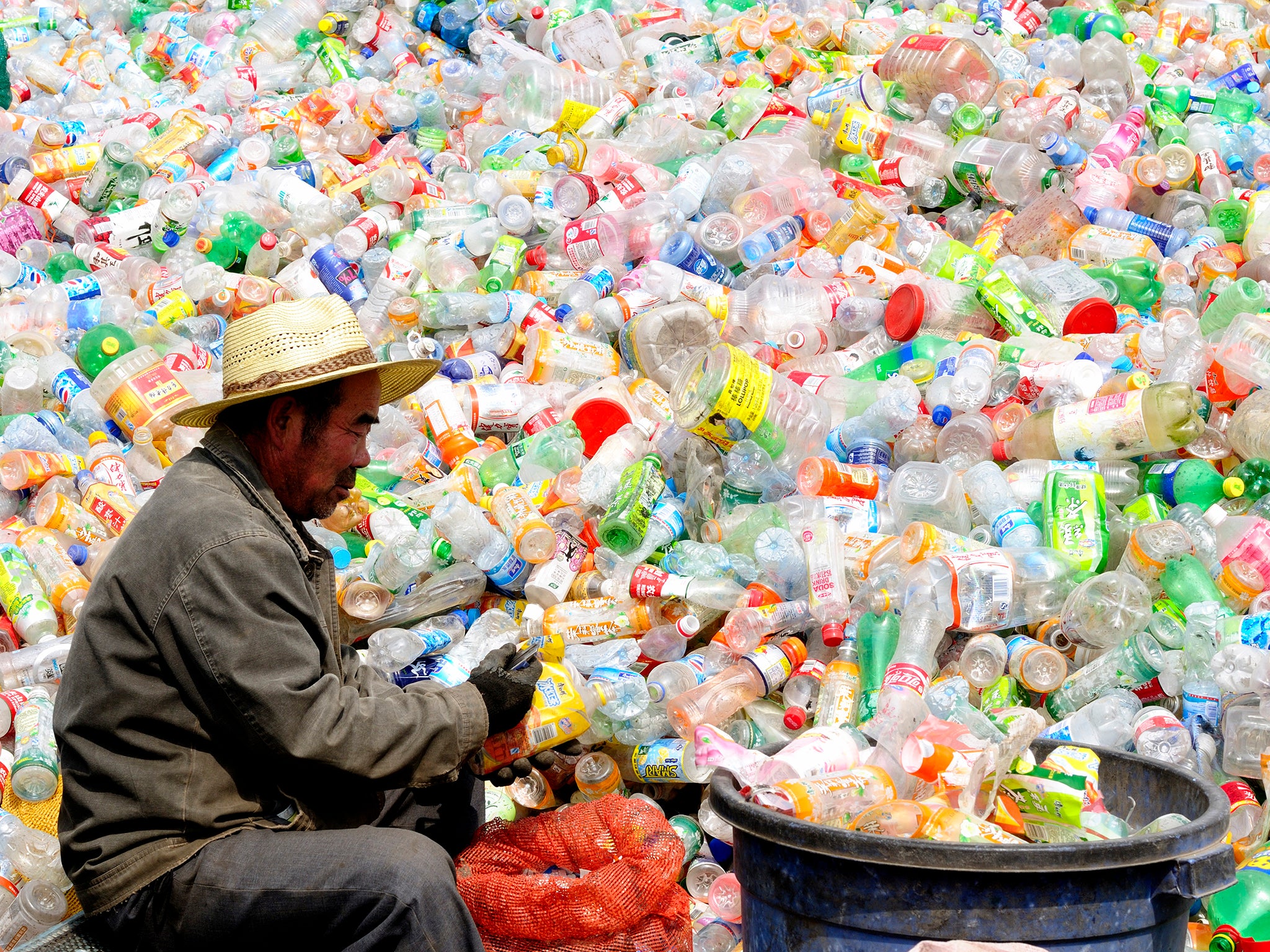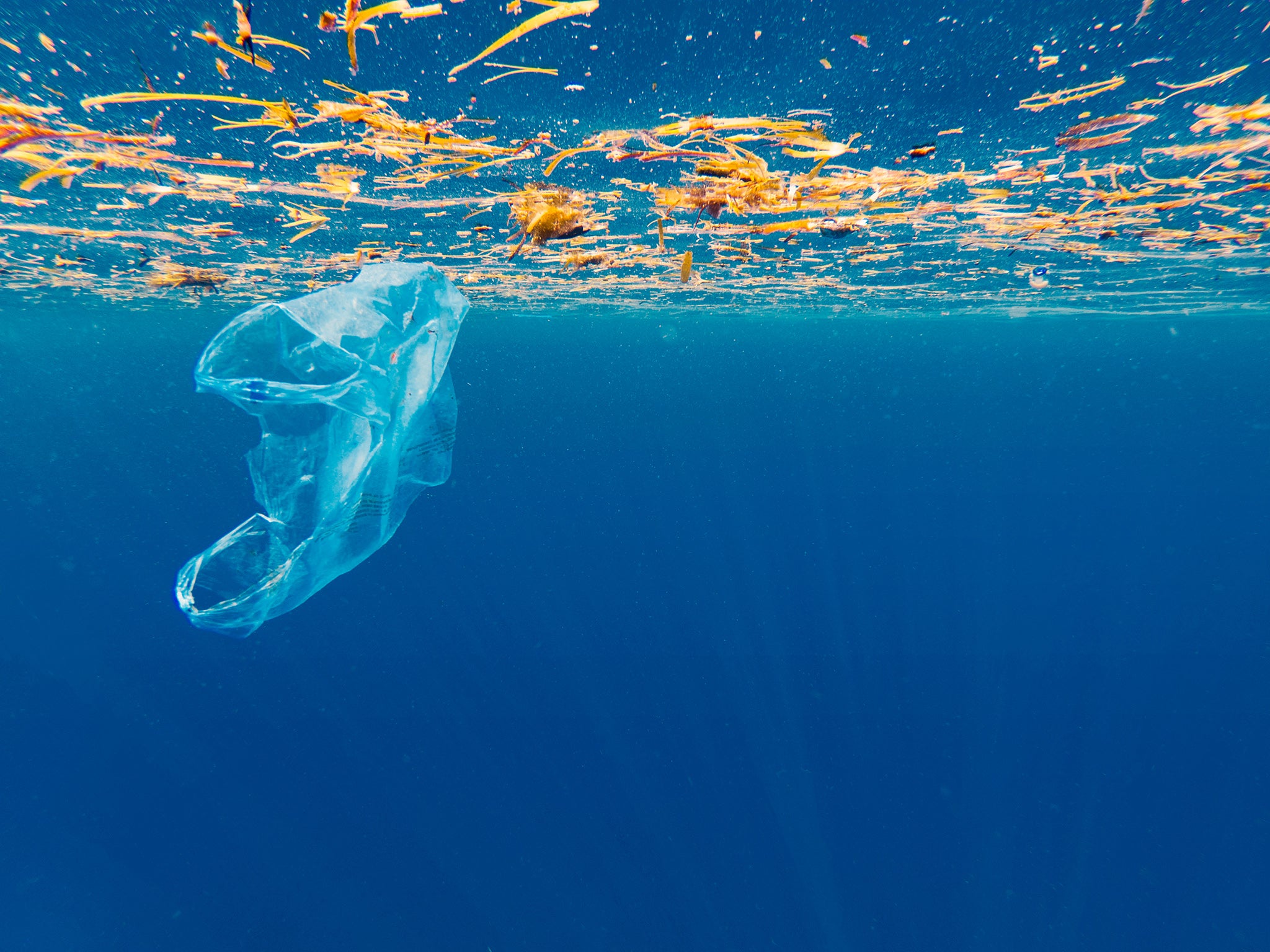Plastic (not) fantastic: Why even biodegradable plastic can still harm the environment
What happens when even biodegradable plastic harms our planet? Isabel Thomlinson tells us why it's so hard to dispose of plastic waste

The idea of a “biodegradable” plastic suggests a material that would degrade to little or nothing over a period of time, posing less of a hazard to wildlife and the environment. This is the sort of claim often made by plastic manufacturers, yet recent research has revealed supposedly biodegradable plastic bags still intact after three years spent either at sea or buried underground. So undegraded were these bags that they were still able to hold more than 2 kilos of shopping.
The study’s authors, Imogen Napper and Richard Thompson at the University of Plymouth, tested compostable, biodegradable, oxo-biodegradable, and conventional polythene plastic bags in three different natural environments: buried in the ground, outdoors exposed to air and sunlight, and submerged in the sea. Not one of the bags broke down completely in all of the environments tested. In particular, the biodegradable bag survived in soil and sea almost unscathed.
This may come as a surprise, but the reality of “biodegradable” plastic does not yet meet our expectations. There are different types of biodegradable plastics, which offer different degrees of degradability and generally require specific conditions in order to do so.
Plastics are made of very long molecules called polymers, which can consist of many thousands of atoms linked together in a chain. The sheer size of the molecules gives plastics their well-known properties – solid, strong, tough, flexible. Many of the plastics we use every day are reluctant to react with other chemicals, and this is why they’re so durable. But this durability is also why plastics pose a serious problem when they get into places they shouldn’t be – such as the ocean.
Degradable – to a degree
Plastic defined as “biodegradable” is made of molecules that can break down naturally, but there is no particular timescale specified for this degradation – under some conditions it can take many years.
Some biodegradable plastic is also said to be “compostable”, and in this case it must adhere to stricter standards. One example is polylactide (PLA), which is used to make food packaging. Compostable plastic certified to European Standard EN 13432 must break down under industrial composting conditions in less than 12 weeks.
An industrial composting plant supplies the necessary balance of heat, moisture, air and microorganisms to efficiently compost food and other compostable waste. But with a need for temperatures of 60C or more, these are not conditions that can be provided by being buried in the ground or in a compost heap at home.
Crucially, neither the terms biodegradable nor compostable imply anything about the material’s ability to break down quickly in a natural environment. In the study, the compostable plastic bag disintegrated exposed to the air and in the sea, but was still present buried in soil after more than two years. These plastics are generally not designed to degrade without special treatment, which means when leaked into the environment as litter – as demonstrated by the Plymouth study – they can be as harmful as typical plastics derived from fossil fuels. There is no international standard for home compostable plastics, although national standards have been established in Austria and Belgium.
The other type of degradable plastic tested was made from oxo-biodegradable plastic. These are conventional plastics, but they contain additives which, after an appropriate time delay, allow the plastic to react with oxygen which breaks it down – speeding up the degradation reactions that would otherwise take place over hundreds of years.
But these plastics are also somewhat controversial, as evidence suggests that they do not biodegrade completely as their manufacturers claim, but instead break down into microplastics which may persist in the environment. As a result, the EU is taking steps to restrict the use of these plastics.

The rise of bioplastics
The ubiquitous nature of plastics worldwide means we need to switch to making them from biological sources if we are to end our dependency on fossil fuels.
There is some evidence that producing plastics from plants has a smaller negative environmental impact than making them from crude oil. But as has been seen with biofuels, this poses new problems through use of land that could otherwise be growing food crops. This is likely to improve as bioplastic industrial processes and more efficient technology become more established. Feedstocks, such as food waste, could also be used.
But bioplastics must also be disposed of correctly just as with conventional plastics, and the existence of compostable plastics must not become an excuse to litter. Instead, compostable plastics can be incorporated into a circular economy model, where waste is recovered and converted into useful products, or where compostable plastics and food waste and be returned to the soil as nutrients.
While more sustainable plastic alternatives exist, they cannot be a sustainable solution without the infrastructure required to manufacture, collect and recycle them on a large scale. At the moment, the different types of biodegradable and conventional plastic in use can pose problems for established recycling systems if they are mixed. While 46 per cent of plastic packaging in the UK is recycled, compostable or biodegradable plastics that are unsupported by existing recycling systems go to landfill or incineration.
What is sure is that a solution is needed soon. Currently, around a third of plastic packaging worldwide ends up in the environment – and so without significant changes, there will be more plastic by weight than fish in the oceans by 2050.
Isabel Thomlinson is a PhD researcher from the University of Bath. This article first appeared on The Conversation
Join our commenting forum
Join thought-provoking conversations, follow other Independent readers and see their replies
Comments